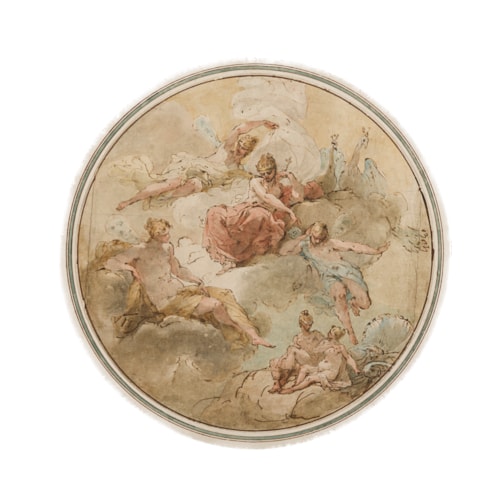
Filippo PEDRINI
Bologna 1763 - Bologna 1856
Biography
The son and pupil of the painter Domenico Pedrini, Filippo Pedrini studied at the Accademia Clementina in Bologna, where he was taught by both Ubaldo and Gaetano Gandolfi, and where among his fellow pupils was Gaetano’s son Mauro and Felice Giani. Pedrini’s own style as both a painter and draughtsman remained indebted to the example of the Gandolfi throughout his career, and he was to carry the Bolognese late Baroque manner well into the 19th century. Pedrini was, in effect, the last of the ‘Gandolfiani’; those Bolognese artists who, like his father Domenico, were taught and influenced by the Gandolfi brothers. Filippo’s first works were two paintings of Saint Barbara and Saint Thomas Aquinas for the Bolognese church of San Bartolomeo, executed in 1779, possibly in collaboration with his father. He continued to be active in Bologna for the remainder of his career, establishing a particular reputation as a fresco painter, and in 1790 was admitted into the Accademia Clementina.
The last decade of the 18th century and the beginning of the 19th century found Pedrini painting a series of important mural cycles for private aristocratic palaces in Bologna, including the palazzi Pallavicini and Tanari and the Villa Aldovrandi Mazzacurati, although his most important work in this vein was arguably the decoration of the Palazzo Hercolani, frescoed with mythological subjects of gods and nymphs. Pedrini also worked in the Palazzo Comunale in Bologna, where he completed frescoes of An Allegory of Victory and The Muses, while in 1802 he painted a Christ Nailed to the Cross as part of a cycle of the Stations of the Cross – alongside works by Gaetano Gandolfi, Pietro Fancelli, Jacopo Alessandro Calvi and others - for the parish church of Santo Stefano in Bazzano, west of the city. Other paintings by Pedrini are to be found today in several Bolognese churches, including San Pietro Capofiume and San Paolo in Monte, as well as in the cemetery of the Certosa of Bologna. Admitted into the Accademia Pontifica in Rome in 1821, Pedrini enjoyed an unusually long career, dying at the age of ninety-three.


